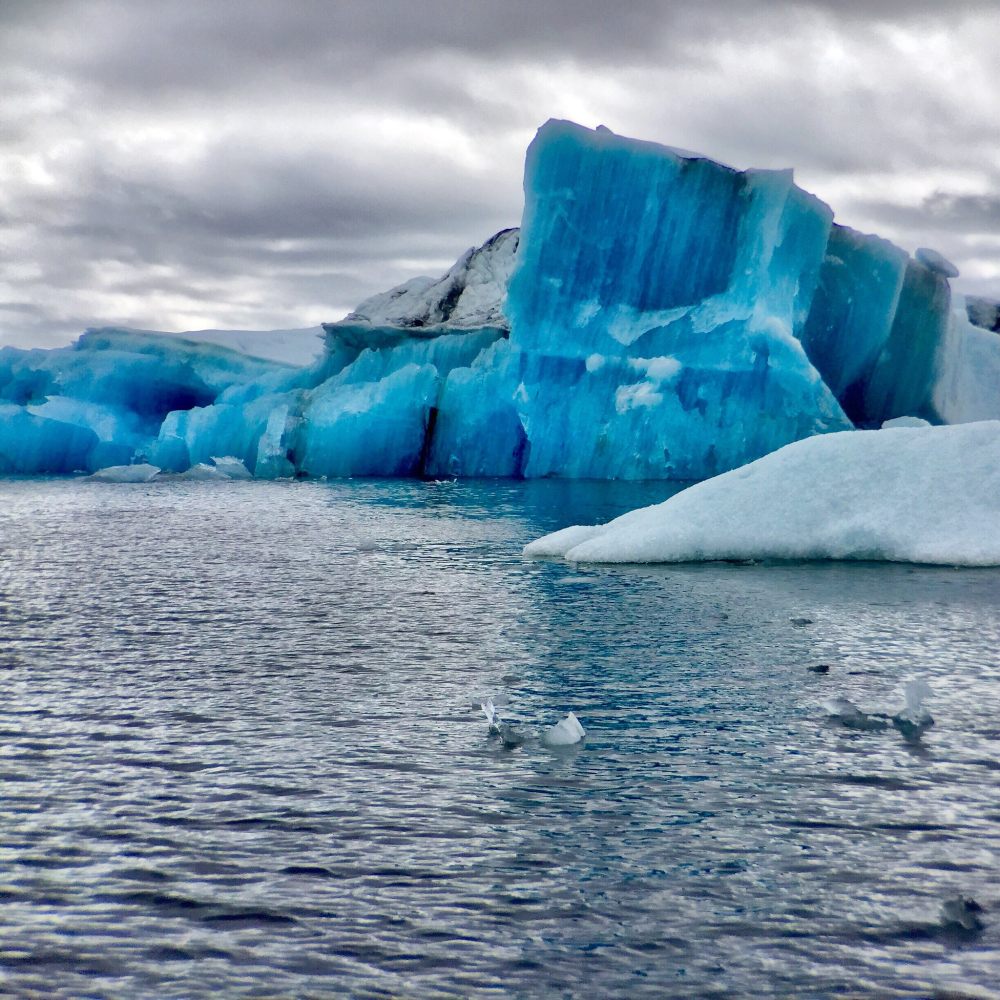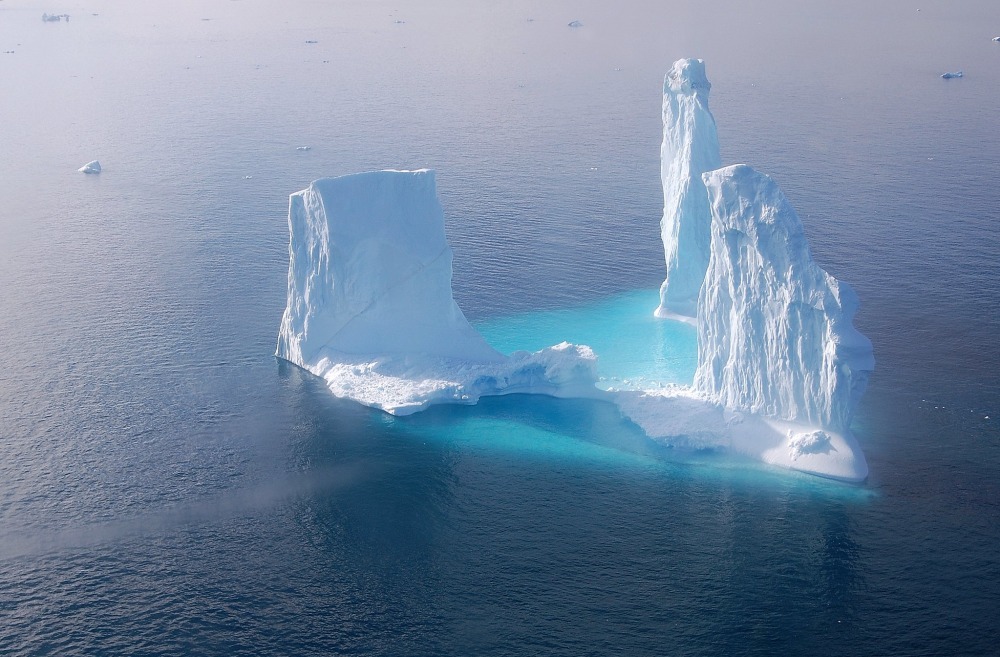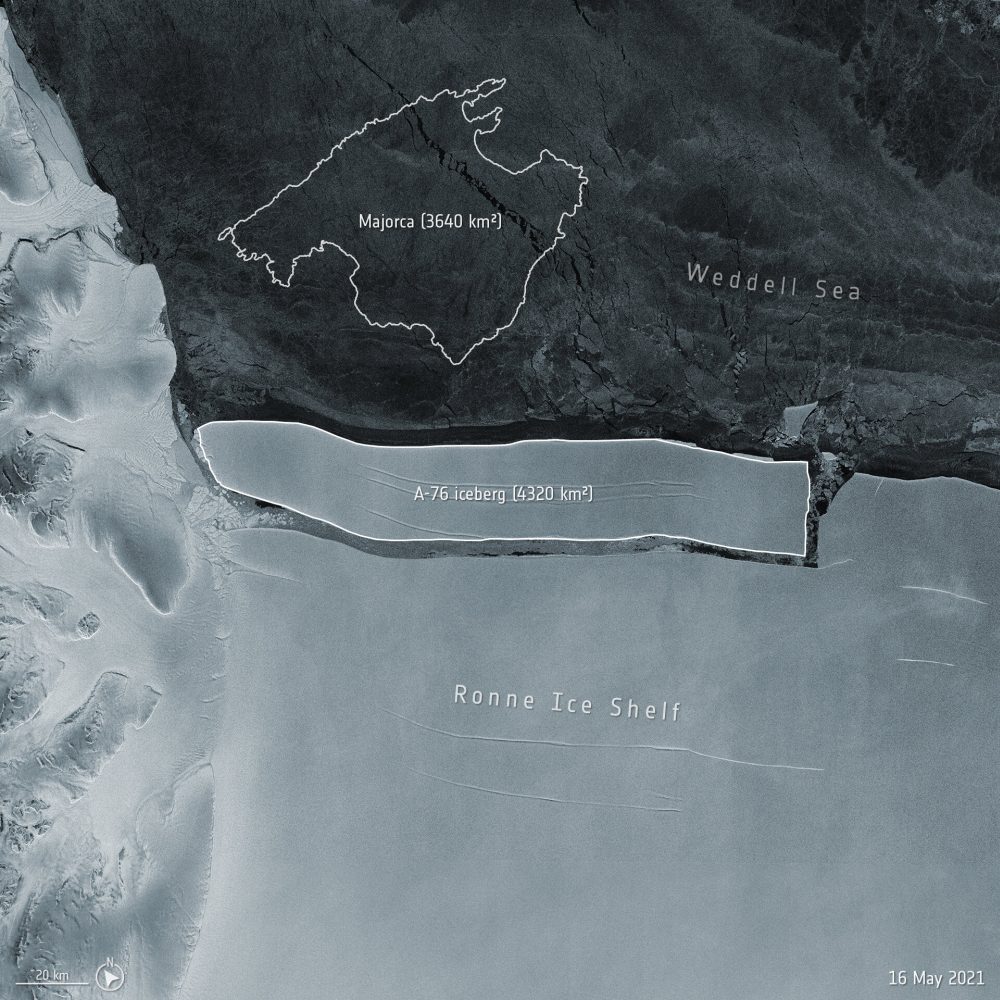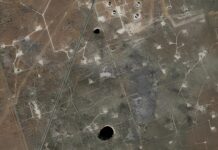Despite having the appearance of being gentle giants, icebergs have the potential to be lethal when they roll over. This not only reveals their beautiful underbelly but also causes earthquakes, tsunamis, and may even engulf nearby boats.
What, however, is the initial cause of the collapse of these enormous ice mountains? We first need to define icebergs in order to understand this process.

The National Oceanic and Atmospheric Administration defines an iceberg as a sizable piece of ice that has separated from a glacier or shelf ice and is presently floating in open water. Additionally, icebergs are made of freshwater and are made from snowfall even though they are floating in the salty ocean. However, they must fulfill certain requirements in order to be classified as an iceberg.
Icebergs must have a thickness of 98–164 feet, a top elevation of at least 16 feet above sea level, and a surface area of at least 5,382 square feet. A “bergy bit” or “growler” is used to describe something smaller. Bergy pieces typically cover an area of 1076–2,229 square feet and are typically medium to large ice chunks with a top elevation of at least 3 feet above sea level. A growler is any container that is smaller than that. They frequently resemble a car or a bus in size.

An iceberg is very stable because gravity keeps the majority of its volume under the water. When icebergs reach this point, they are unlikely to flip. As a result, when an iceberg forms, the chance of it flipping is highest.
Think about how releasing a rubber duck or other plastic toy will cause it to float back to the same spot on the water’s surface. The best stable position for these objects will be determined by gravity, which is also the force that flips an iceberg. Because of its uneven shape, an iceberg that separates from a glacier and falls into the ocean would attempt to sink most of its weight below the surface in order to float steadily with the aid of gravity.
The video below shows you how this looks exactly way it does. It shows an iceberg crumbling, moving most of its weight below, and eventually settling in one place. Lake Jökulsárlón in Iceland is where the footage was recorded. The icebergs that calve out of the Breiamerkurjökull glacier are what make the lake famous.
Although it is a wonderful sight to behold, it can also be very dangerous. Small icebergs might not be hazardous, but larger ones, which are common, could trigger earthquakes or tsunamis.
Iceberg A-76, a sizable iceberg that has detached from Antarctica’s Ronne Ice Shelf, is the largest iceberg in the world (as of right now). It is somewhat bigger than the Spanish island of Majorca at 4320 square kilometres. Even just imagining how much force such a gigantic object might produce makes one uneasy.

Researchers at the University of Chicago discovered that when icebergs capsize, they can easily release as much energy as an atomic bomb and some of the world’s most devastating natural disasters. Icebergs that flip over can create tsunamis, and if they do so close to the mainland or another solid surface, the ground may tremble violently enough to be mistaken for an earthquake.
The researchers have built a miniature replica of an iceberg flip. Gravity is clearly pushing the vast majority of the model iceberg into the water. It creates a wave and stirs the water ferociously. Think how how it may appear with actual icebergs.
However, as the Titanic disaster demonstrated, icebergs can also be fatal when they tip over. In the dangerous Iceberg Alley in 1912, an underwater chunk of an iceberg scraped down the side of the British ocean liner for about seven seconds before it sank.
To prevent accidents brought by by icebergs, the International Ice Patrol was established. They locate and monitor icebergs and alert ships to any dangers.






